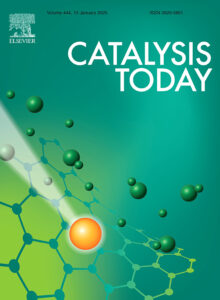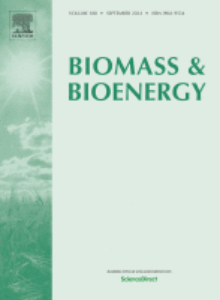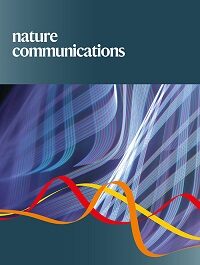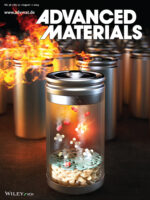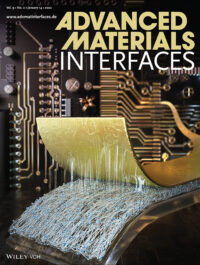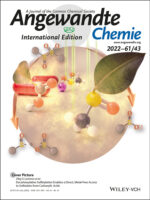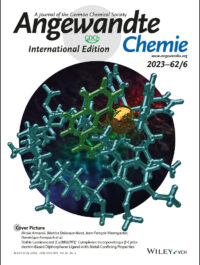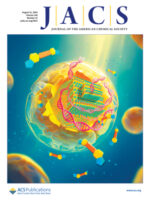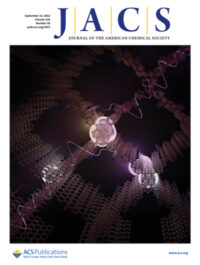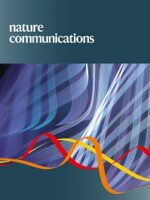The Spectrocat team :
Spectroscopy and Catalysis for Innovation
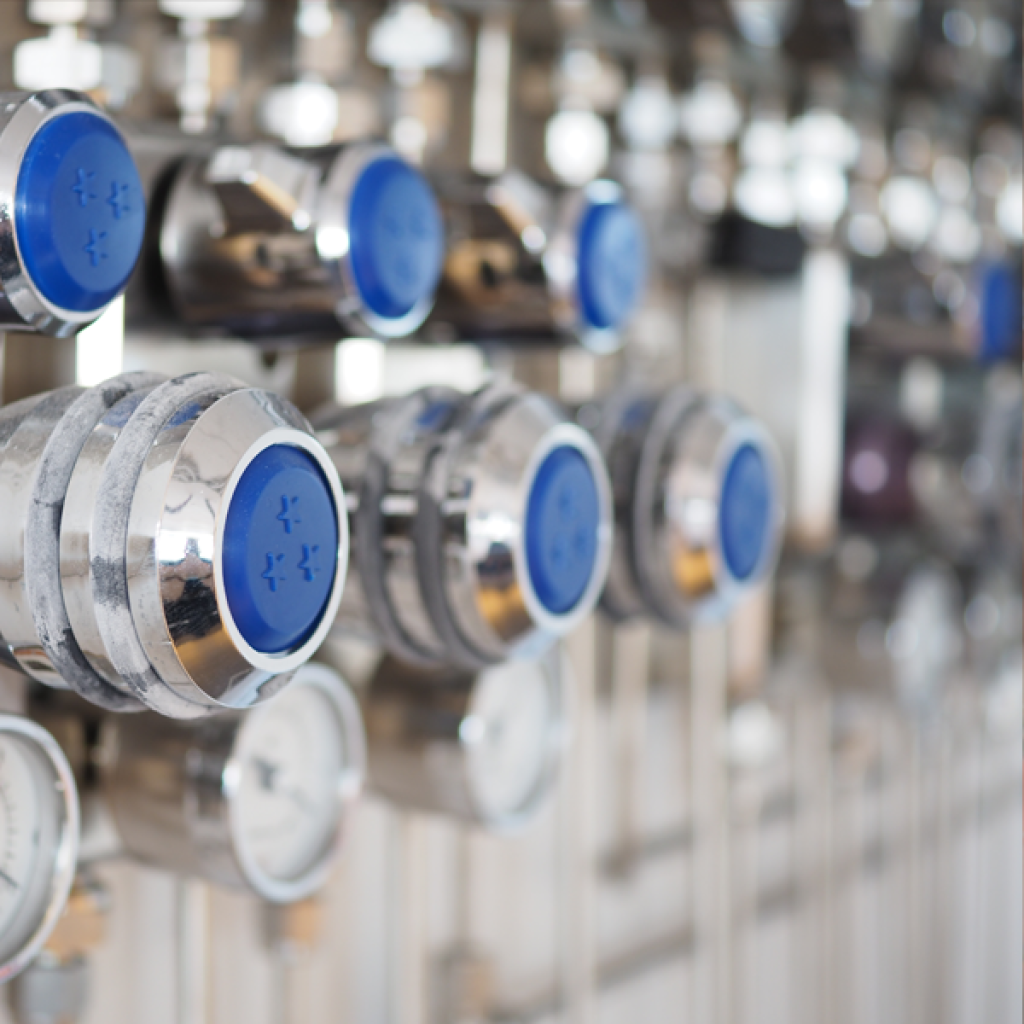
History and roots of Spectrocat
The Spectrocat team has its origins in two laboratories at the University of Caen: the Laboratoire de Catalyse founded by François Gault in 1960, and Professor Romanet’s Laboratoire de Spectroscopie Moléculaire.
In 1979, the merger of the Laboratoire de Catalyse, then headed by Daniel Cornet, and the Laboratoire de Spectroscopie Moléculaire, then headed by Jean-Claude Lavalley, gave rise to the Unité Mixte CNRS – Université de Caen “Structure et réactivité d’espèces adsorbées”. Daniel Cornet and Jean-Claude Lavalley successively directed the laboratory, which eventually became the “Laboratoire Catalyse et Spectrochimie”, thus affirming its orientation.
Under Jean-Claude Lavalley’s direction, the laboratory has become a world reference in the field of infrared spectroscopy applied to catalysis, in particular to the “operando” observation of the catalyst under reaction conditions.
Worldwide recognition
The LCS has distinguished itself by developing innovative methods for using infrared spectroscopy to analyze catalytic materials.
Back in the 1980s, Jacques Saussey, a teacher-researcher at the laboratory, introduced in situ IR spectroscopy. He applied it to the study of reacting catalysts in catalytic reactors. This approach, later known as operando spectroscopy, has strengthened the LCS’s position as an international leader in this field.
In 2000, NMR and Raman spectroscopy were added to the laboratory’s spectroscopic techniques. The operando method was rapidly extended to include these new approaches, enriching analysis and observation capabilities under real-life conditions.
Expertise and Technological Development
Understanding catalysis at the molecular level
One of the main aims of the Spectrocat team is to understand and control heterogeneous catalysis at the molecular level. To this end, the team develops and optimizes spectroscopic tools for characterizing :
- Diffusion and reaction kinetics,
- The nature and role of active sites (Brøntsed or Lewis acid sites, metal sites, redox sites),
- Reaction intermediates and catalyst deactivation.
Real-time spectroscopy
Catalysts are analyzed under continuous flow conditions typical of their use. Thanks to real-time quantitative spectroscopy and the use of an operando methodology, it is possible to precisely describe the reaction mechanisms and propose avenues of improvement for new generations of more efficient and sustainable catalysts.
These methodologies are also being extended to studies of gas adsorption and separation, opening the way to new applications in a variety of industrial fields.


Recent Developments
The Spectrocat team, in collaboration with leading academic and industrial groups, has developed several tools and methodologies, including :
- Spectroscopy operando (IR, Raman, UV-Vis) for thermal catalysis, plasmas, photocatalysis, gas separation and adsorption,
- Temporal and spatial resolution: 2D-IR methodology, IR-laser coupling, etc,La résolution temporelle et spatiale : méthodologie 2D-IR, couplage IR-lasers, etc,
- Coupled techniques: IR-Raman, IR-gravimetry, IR-DSC,
- Analysis automation and development of multi-sample tools.
- Data analysis and interpretation (2D-COS, 2D-FFT, maximum entropy, spectral inversion, PCA, chemometrics in general, development of spectral analysis software via Python (Spectrochempy), machine learning…).
For the NMR platform, advances are focused on:
- Increased sensitivity and resolution thanks to the use of hyperpolarized Xenon,
- Coupling with crystallographic methods and Density Functional Theory (DFT) .
Applications of Developed Technologies
Areas of application for Spectrocat technologies and methodologies include :
- Energy: production, transport and storage of clean fuels (H2), biomass processing,
- Environment: waste reduction, pollution control and CCUS (Carbon Capture, Utilization and Storage) technologies,
- New concepts: emerging applications in various industrial sectors.
Catalysts studied
The team’s research focuses on a wide variety of catalysts:
- Zeolite and porous materials (MOFs)
- Metal oxides
- Supported metals
- Sulfide catalysts

Publications
A comparative study by IR spectroscopy and transmission electron microscopy of SiO2 and TiO2 supported MoS2 catalysts for the water-gas shift reaction
Appl. Catal. at B 378 (2025) 125505.
A first study of CO adsorption-IR spectroscopy and HER activity: Understanding TiO2 morphology effects on MoS2 active sites
L. Ben Neon, K. Teixeira Santos, L. Dubau b, L. Oliviero
Catalysis Today 459 (2025) 115384
Active sites for HDS on (Pt,Co)MoS2 catalysts are also active for HER reaction: A proof of concept
Catalysis Today 445 (2025) 115020.
Biomass and Bioenergy 188 (2024) 107341.
Nat Commun 15 (2024) 3434.
Advanced Materials (2024) 2403053.
Advanced Materials Interfaces 9 (2022) 2101692.
Angew Chem Int Ed 62 (2023).
Tunable Wettability of a Dual-Faced Covalent Organic Framework Membrane for Enhanced Water Filtration
J. Am. Chem. Soc. 146 (2024) 23537-23554.
J. Am. Chem. Soc. 144 (2022) 16433-16446.
Reverse oxygen spillover triggered by CO adsorption on Sn-doped Pt/TiO2 for low-temperature CO oxidation
Nat Commun 14 (2023) 3477.
Projets
No project containing the searched term
3DZEOPOL
- LCS
- 240 K€ financé par l'institut Carnot.
- EL ROZ Mohamad[10%]
ADSOCARB
- LCS
- Projet Émergence (RIN) financé par la Région Normandie.
- THIBAULT-STARZYK Frédéric [5%]; AZZOLINA-JURY Fédérico; ELGAYYAR Taha
APL
- LCS
- 56K€ financés par l'institut Carnot.
- THOMAS Karine; MAUGE Françoise;
BioCAR
- LCS - CORIA
- This project is co-funded by the European Union and the EMC3 labex, to the tune of €352073, of which €162513 comes from the ERDF.
- MAUGÉ Françoise
BioSyngOP
- IRCELyon - LCS - USTL
- Ce projet est financé par l'Agence Nationale de la Recherche à hauteur de 495 040 € dans le cadre du financement BLANC 2011.
- MEUNIER Frederic
- LCS
- Financé à hauteur de 20000€ par LABEX EMC3-2025
- BARREAU Mathias
CaeSAR
- CNRS - CEA - UNICAEN - ENSICAEN et al.
- Financé à parts égales par France 2030 et la Région Normandie à hauteur de 21 600 000€ dont 10 800 000€ PIA.
- LCS - Laboratoire Catalyse & Spectrochimie
CELL-PHI
- LCS - LOMC
- Lauréat Labex EMC³ AAP2022
- TRAVERT Arnaud [5%];BAZIN Philippe [5%]; KOUVATAS Cassandre;
CIFRE Enercat
- LCS
- Thèse de doctorat soutenu par Mathias LALUC, dirigée par Marco DATURI.
- LALUC Mathias; DATURI Marco
DirectSynBioFuel
- UCCS - LCS
- Financé à hauteur de 329 680 € par l'ANR
- VALTCHEV Valentin
DRUID
- LCS - CORIA
- Ce projet est cofinancé par l'Union européenne et la région Normandie à hauteur de 130 480€
- DATURI Marco
EcoHdoc
- LCS - UCCS - LACCO
- Ce projet est financé par l'Agence Nationale de la Recherche à hauteur de 673 897 € et le FEDER.
- MAUGÉ Françoise
H2CO2
- LCS - CRISMAT
- Ce projet est cofinancé par l'Union européenne et la Région Normandie à hauteur de 149 850 €
- EL ROZ Mohamad [10%]
HEI
- LCS
- Ce projet est financé par l'Union européenne et la Région Normandie à hauteur de 558 000 euros.
HERMOS
- LCS
- Ressourcement CARNOT ESP 2020
- MAUGE Francoise [10%];OLIVIERO Laetitia [10%]
HOSMOS
- LCS - CIMAP
- Lauréat Labex EMC³ AAP2022
- OLIVIERO Laetitia [5%]; MINTOVA Svetlana [5%];
- LCS
- Ressourcement CARNOT ESP 2018
- KOUVATAS Cassandre [10%]
MAMABIO
- LCS - IFPEN
- Financé à hauteur de 2,2 M€ par le PIA
- TRAVERT Arnaud [5%];THOMAS Karine [5%];BAZIN Philippe [5%]
METHASOL
- LCS
- 4.0 M€ from the EU’s Horizon 2020 research and innovation programme out of a total budget of 5.2 M€
- BAZIN Philippe [10%];CLET Guillaume [10%];DATURI Marco [10%];EL ROZ Mohamad [10%];VIMONT Alexandre [10%]
MOF2H2
- LCS - ICGM - LOF - IMAP
- Ce projet est financé par l'Union européenne (3,2 M€) dans le cadre de la convention de subvention #101084131.
- DATURI Marco [5%];EL ROZ Mohamad [5%]
MOF4AIR
- LCS
- Budget : 11.1 M€, dont 9.9 M€ de contribution de l’UE
- BAZIN Philippe [10%];CLET Guillaume [10%];DATURI Marco [10%];VIMONT Alexandre [10%]
- LCS
- Ressourcement CARNOT ESP 2019
- CLET Guillaume [10%];DATURI Marco [10%]
- LCS - IMAP - ICGM - Soleil
- Aide globale de 488510,40 €, dont 157920 € pour le LCS
- DATURI Marco; EL ROZ Mohamad
MOSAIC
- LCS
- Aide de l'ANR 377 984 euros
- FERNANDEZ Christian
Nanoclean Energy
- LCS - Total
- Ce projet bénéficie d'un budget global de 2 M€, dont la moitié est apportée par TOTAL tandis que l’autre moitié est prise en charge par l’ANR
- VALTCHEV Valentin
- LCS - CRISMAT
- Lauréat Labex EMC³ AAP2016
- CLET Guillaume
- LCS
- 24 887 k€ financés par Carnot ESP - AAP2021
- BAZIN Philippe
SIMIACCI
- LCS
- 3,9 M€ financé par l'Union Européene.
- DATURI Marco
SIRCO
- LCS
- Ce projet est cofinancé par l’Union européenne et la Région Normandie, en partenariat avec Evonik.
- EL ROZ Mohamad;
- LCS
- 528 K€ financé par le Label d’excellence RIN RECHERCHE 2022.
- EL ROZ Mohamad
The SpectroCat team
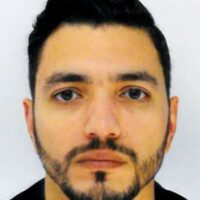
Key words:
Spectrocat team has been studying the relative new field of catalysis assisted by non-thermal plasmas during the last decades. Spectrocat team has largely contributed to the understanding of the interaction between cold plasmas and heterogeneous catalysts through the observation of species being generated at the catalyst surface by using IR spectroscopy (in situ and operando) during plasma-assisted reactions. Spectrocat team has conceived different sorts of IR-plasma cells to be operated under partial vacuum as well as the first IR-DBD plasma cell in literature, capable to work under atmospheric pressure. Spectrocat team has also been devoted to the optimization of plasma-assisted chemical reactors using different kinds of plasmas (glow discharge, Dielectric Barrier Discharge…). LCS has synthesized and prepared several efficient catalysts for different plasma-assisted CO2 valorization reactions for the production of valuable chemicals.
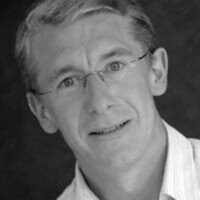
Key words:
Development of spectroscopic tools and in situ and operando methodologies to understand the functioning of a material/catalyst at the molecular scale and determine the reaction mechanisms involved. The processes studied concern the after-treatment of gaseous emissions from mobile sources (catalytic converter) or stationary sources (plant discharge), air quality improvement, and the adsorption, separation and diffusion of molecules. The main thrusts of IR tool development are:
1) to get closer to the actual physical conditions under which materials are used (temperature, pressure, fluid mechanics, etc.),
2) to get closer to the shaped catalyst (from powder to monolith),
3) to increase the sensitivity of analyses to obtain the maximum amount of qualitative and quantitative information on the mechanism (multi-technique coupling, isotope exchange, temporal and spatial resolutions, transient reaction, multi-sample cells, automation, etc.) and
4) develop research themes in new areas (photo-catalysis, plasma, microwave, ion bombardment, solid/liquid catalysis, ...).
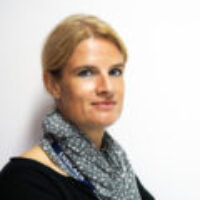
Key words:
I am a research associate within the Spectrocat team, where my work focuses on the characterization of metal oxides and nanomaterials using in situ and operando infrared (IR) spectroscopy. My primary goal is to understand, at the molecular level, the behavior of these materials and elucidate the reaction mechanisms involved. My research has specifically addressed the post-treatment of gaseous emissions, whether from mobile sources, such as NOx traps for catalytic converters, or stationary sources, such as the degradation of volatile organic compounds (VOCs). These studies aim to contribute to the improvement of air quality.
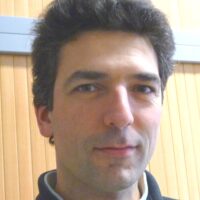
Key words:
Owing to its complementarity with IR spectroscopy, Raman spectroscopy finds naturally its place at LCS. The studies carried out in the laboratory aim at an extended characterization par by Raman spectroscopy of materials, catalysts and adsorbents, of a very diverse nature, such as oxides and lamellar oxides, MOFs or zeolites. Our approach intends to develop de characterization methodologies both in ambient conditions and in operating conditions (operando), casually by couplings with other spectroscopies. In these various aspects, quantitative mesurements are often favoured. Beyond the study of gas phase reactions, our studies also imply the development of Raman measurements in more severe conditions, at high temperature, under pressure or in the liquid phase, with notable applications for separation, storage or conversion of environmental molecules such as CO2.
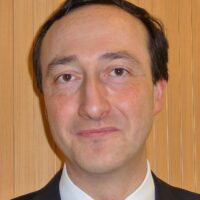
Key words:
My research activities focus on the study of catalytic mechanisms with a view to designing new catalysts. They are mainly developed in the fields of environmental protection (elimination of gaseous pollutants), production of energy carriers (hydrogen by reforming, WGS, photocatalysis; methanol; formic acid; ammonia; ...) and CO2 capture and hydrogenation (adsorption; methanation, methanolization, syngas, ...). Understanding the catalytic site and its arrangement within solids (oxidic or porous) is at the heart of my investigations, which is why I favor the operando approach and its development (time-resolved analyses, including on shaped materials).
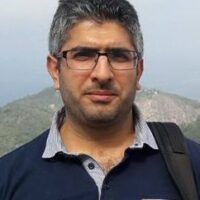
Key words:
The quest to understand and fine-tune the properties of matter, at the molecular level, has led to groundbreaking innovations that shape our modern world. While traditional spectroscopic techniques provide invaluable insights into materials, time-resolved (TR) techniques emerge as a prominent for monitoring processes occurring on time scales ranging from milliseconds to femtoseconds. The principal aim of our research pursuits is the investigation of diverse photo-physical and chemical processes inherent to photocatalytic reactions, using complementary spectroscopic approaches (in-situ, operando, and TR (IR, Photoluminescence, Absorption transient) spectroscopies). The information on the excited state life-times, energy transfers and the reaction intermediates and mechanisms hold substantial value in our endeavor to conceive novel photocatalysts and photoactive materials for ultimately catalyzing the efficient conversion of light into chemical energy.
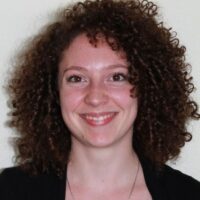
Key words:
My areas of research are mainly focused on the study of materials using NMR, coupled with crystallographic studies and DFT calculations. I'm also interested in the development of new methodologies in the laboratory, notably linked to NMR spectroscopy. Working mainly on the structural and architectural study of porous zeolite-type catalysts, my activity also focuses on various types of materials for different fields of application (anionic conductors, cellulose-based phase-change materials). The nuclei studied can be classical (e.g. 1H, 13C, 29Si, 27Al) or more specific, exotic or complex (e.g. 17O, 71Ga, 129Xe). Experiments are set up according to the structural question posed, and instrumentation adapted to the system studied (conventional CP/MAS probes, hyperpolarized 129Xe, pulsed field gradient NMR, or access to the TGIR network for high fields or DNP).

Key words:
Our research takes place in the context of sustainable development, and focuses on hydrogen production, biomass valorization for fuel and chemical production, and waste oil recovery. Knowledge of phenomena at interfaces is essential to enhance the performance of catalysts and adsorbents. Hence, based on our skills in in situ and operando infrared spectroscopy, we aim to obtain structure-activity relationships to determine the nature of active sites and reaction mechanisms, in order to establish bases for the rational design of catalysts and adsorbents.

Key words:
My research focuses on heterogeneous catalysis, mainly oxidation and catalysis in the presence of sulfur. The common thread running through my work is the identification of catalyst active sites and the criteria (nature, strength, concentration, metal-support interaction, etc.) that explain the activities measured, as well as deactivation phenomena. I have thus extended the CO adsorption methodology followed by IR spectroscopy to obtain a fine speciation of the active sites of sulfide catalysts by distinguishing the M and S edge sites of the sheets and their promotion rate. This advance, coupled with the characterization of sulfide sheet morphology by dark-field microscopy, has enabled us to establish structure-activity relationships in hydrodesulfurization. My current research focuses on sulfide catalysts for H2 production via the Water Gas Shift reaction or electrocatalysis of water. These topics build on previous results and methodological developments (IR operando for sulfide catalysts, characterization of sulfides on non-oxide supports).
Key words:
Chemical reaction or adsorption sites on solid surfaces are a major key to understanding how our environment works, or to improving industrial processes. On model solids such as zeolites or silicas, infrared spectroscopy enables a very detailed study of these phenomena, notably by using probe molecules.
In situ or operando spectroscopy can be applied in novel ways to provide new information and help understand the surface chemistry of solids. The energy input to the chemical system can be provided by short pulses, or pulses that are very well controlled in time, to access a relevant time scale for molecular events (ms, µs or even ns). Microwaves, plasmas or lasers can be used to control the reactions studied by spectroscopy to describe the elementary stages of chemical reaction on the surface of catalysts.
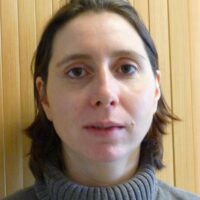
Key words:
The valorisation of biomass for the production of fuels and chemicals is undergoing rapid development. Most of these processes are carried out in a liquid medium and involve a solid as catalyst or adsorbent. Knowledge and control of phenomena at solid-liquid interfaces are essential to enhance the performance of heterogeneous catalysts and adsorbents. Drawing on our analytical skills in infrared and Raman spectroscopy and our experience in catalytic and/or adsorptive purification of liquids from fossil or biomass sources, we are developing infrared techniques (solid-liquid ATR, etc.) suited to the study of these chemical phenomena.
Key words:
Arnaud Travert is Professor at University of Caen Normandy. His research activities focus on the study of the surface properties of metal oxides and zeolites by IR spectroscopy of adsorbed probe molecules, IR operando spectroscopy and chemometrics/machine learning methods. In particular he develops and use multivariate methods for the analysis of in situ or operando IR spectra and the quantitative assessment of key thermo-kinetic parameters involved in catalytic processes, in particular internal diffusion rates, adsorption thermodynamic parameters and surface reaction rate constants. He applies these methods to catalytic or adsorption processes, such as cracking reactions, transformation of bio-alcohols, CO2 capture or hydrogenation.

Key words:
Within our laboratory of catalysis and spectrochemistry, my research activities focus on the study of porous materials and their use in catalysis. More specifically, I'm interested in using solid-state Nuclear Magnetic Resonance (NMR) to further our knowledge of the structure and catalytic behavior of these materials.
In addition to providing information on the structure and dynamics of porous materials (via nuclei such as 29Si, 27Al, 1H, 17O...), solid-state NMR can also be used to study interactions between adsorbed molecules and catalyst active sites via in situ and operando techniques.
Moreover, the NMR of hyperpolarized xenon-129 (HP 129Xe) is an advanced technique that enables high sensitivity and increased resolution of NMR experiments. It provides detailed information on pore size, channel connectivity and adsorption site distribution, which is essential for the use of these materials in applications such as catalysis, but also gas separation…
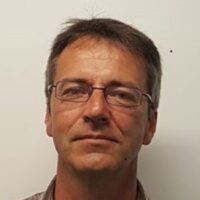
Key words:
Development of methods for qualitative and quantitative evaluation of hydroxyl groups and acid sites in zeolites, Metal-Organic-Frameworks (MOFs) and metal oxides by in situ infrared spectroscopy coupled or not with thermogravimetric analysis.
In situ & Operando Infrared Spectroscopy determination of kinetic and thermodynamic parameters during adsorption of hydrocarbon molecules in microporous materials.


